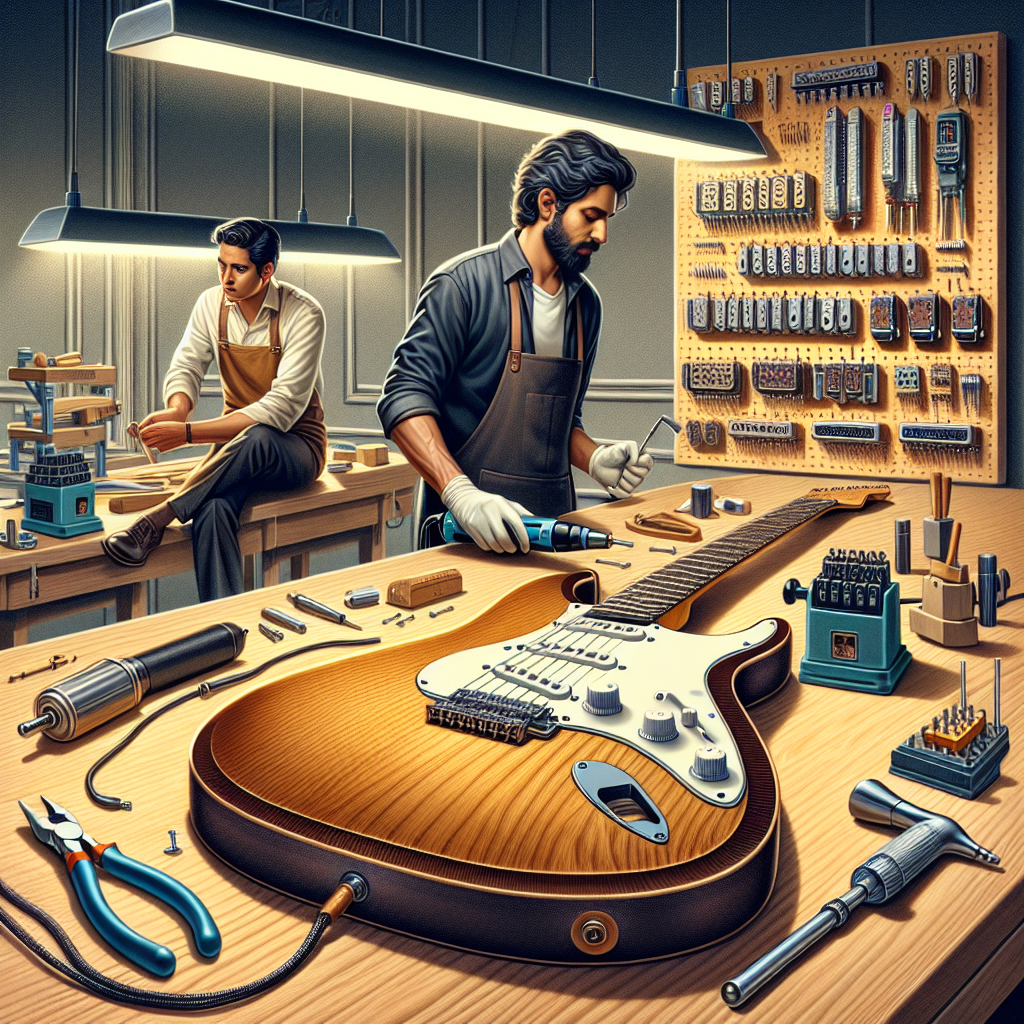
10-Step Guide: How to Route a Guitar Body for New Pickups
The guitar’s soul often lies in its pickups – they’re what capture the vibrations of the strings and convert them into the sound you hear. However, sometimes the factory-installed pickups don’t quite match the sound you envision. If you’re looking to upgrade your guitar’s tone, routing the guitar body to fit new pickups is a step in the right direction. This process can seem daunting, but with careful preparation and attention to detail, it’s within reach for DIY enthusiasts. This guide will walk you through the steps to successfully route a guitar body for new pickups.
Understanding the Basics of Guitar Pickup Routing
Before diving into the process, it’s crucial to understand what routing involves. Routing a guitar body means creating a cavity to fit the new pickups. Different pickups require different cavity sizes, and the routing must be precise to ensure good fit and performance. Common types include single-coil and humbucker pickups, each with specific dimensional requirements.
Additionally, altering your guitar’s body can affect its acoustic properties, influencing tone and resonance. Thus, it’s essential to plan your modifications carefully to retain the guitar’s inherent qualities.
Gathering the Necessary Tools and Materials
Routing a guitar body for new pickups requires specific tools. You’ll need:
- A router with a set of bits appropriate for woodwork.
- Saws for any preliminary cuts, if needed.
- Clamps to secure the guitar during routing.
- Screwdrivers to remove and replace components.
- Sandpaper for smoothing out the cavity.
- A template for your pickup shape (many manufacturers provide these).
Safety is paramount, so be sure to have safety goggles and work gloves on hand. Having a clean, organized workspace can also prevent mishaps during the process.
Preparing the Guitar for Routing
Start by removing the guitar strings and components that might get in the way, such as the pickguard and existing pickups. Carefully unscrew and label each piece, keeping them in a safe place. Once the strings and pickups are removed, cover the parts of the guitar you won’t be working on with painter’s tape to protect them from accidental damage.
Executing the Routing Process
With your guitar and workspace prepared, it’s time to route:
Avoid rushing the process. Consistent, steady movements with the router typically yield the best results, reducing the risk of mistakes.
Finishing Touches
Once the routing is complete, sand the edges of the cavity to smooth out any rough areas. This will help prevent any potential damage to the pickup wires or guitar body during installation. Once satisfied with the cavity’s fit and finish, carefully reinstall any removed components, making adjustments to the cavity if necessary.
FAQs
- Why use a template for routing? Templates ensure accuracy and consistency, especially if you have limited experience with routing. They guide the tool, helping maintain desired dimensions.
- What kinds of pickups can I install after routing? You can install any pickup type that fits the newly routed cavity, typically chosen based on the desired sound and musical genre.
- Is routing suitable for all guitar types? Most solid-body guitars can be routed, but extreme caution is advised for semi-hollow or hollow bodies due to their structural differences.
- How does routing affect guitar tone? Larger cavities might influence the guitar’s resonance slightly, but the effect is often minimal compared to changing pickups.
- Can I revert the routing modifications? Returning the guitar to its original state can be challenging unless you fill the cavity and refinish the body, which is complex.
- Do I need specialized knowledge to route a guitar body? Basic woodworking skills are helpful, but detailed tutorials and templates can guide beginners through the process.
Conclusion
Routing a guitar body for new pickups can transform your instrument’s sound, giving it a new dimension of tonal possibilities. While the task requires precision, patience, and the right tools, the end result can breathe new life into your guitar. Whether you’re a seasoned musician seeking a custom sound or a hobbyist eager to experiment, following the steps outlined in this guide will help you achieve a successful pickup upgrade. Remember, every modification you make contributes to your guitar’s uniqueness. Embrace the process and enjoy the newfound tones your modified guitar will bring.
For more in-depth guitar modifications and DIY tips, you might find extensive resources at Premier Guitar, a reputable site for guitar enthusiasts.